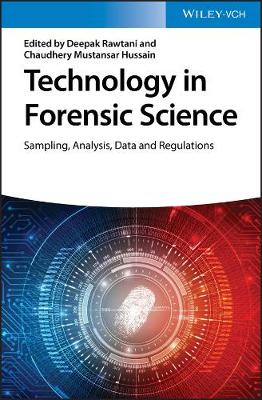Harnessing the power of advanced technologies in forensic science!
Forensic science technologies are used in various areas such as the judicial system, for the identification of mass disaster victims, parenthood disputes, doping control, policing and even history of art. Modern techniques include high-resolution light and electron microscopy, chromatographic and spectroscopic approaches and high-performance, sensor-based methods, complemented by automated, artificially intelligent software tools.
The focus of Technology in Forensic Science: Sampling, Analysis, Data and Regulations is the technology that is employed in the various areas where forensic science plays an important role. Starting with best practices on sample taking, the book then reviews analytical methods such as high-resolution microscopy and chromatography, biometric approaches, and advanced sensor technology as well as emerging technologies such as nanotechnology and taggant technology. The book concludes with an overview of the economics and commercialization of forensic science technologies.
- Beyond luminol: the book reviews modern methods employed in forensic science
- Integrated approach: reviews the usage of the tools and methods for interpretation of the results
- Forward-looking: gives an outlook to emerging methods such as nanotechnology- and AI-based approaches to forensic investigations
Technology in Forensic Science: Sampling, Analysis, Data and Regulations is a useful resource for forensic scientists, analytical chemists, toxicologists, as well as for pathologists, and sensor developers.
- ISBN10 3527827684
- ISBN13 9783527827688
- Publish Date 28 August 2020
- Publish Status Unknown
- Publish Country DE
- Imprint Wiley-VCH Verlag GmbH
- Pages 416
- Language English
